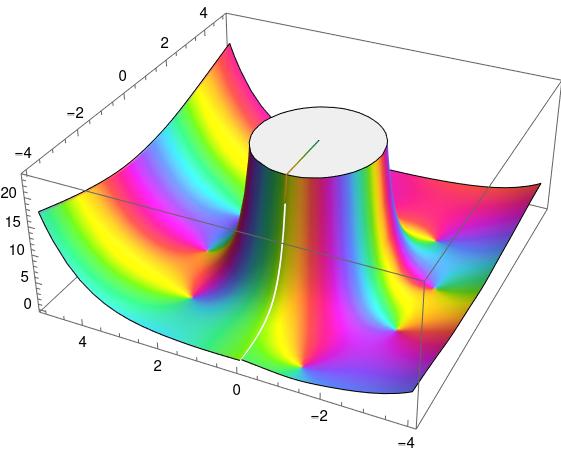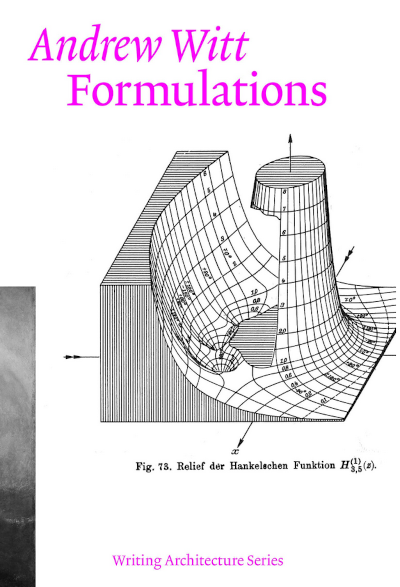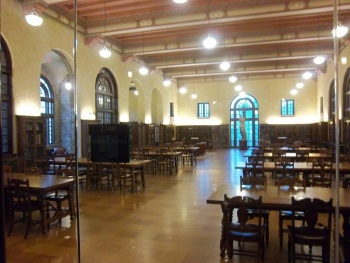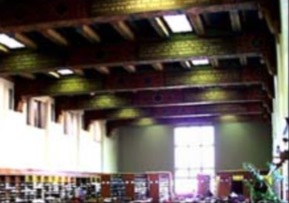I recently received a review copy of Andrew Witt’s new book Formulations: Architecture, Mathematics, and Culture.
The Hankel function on the cover is the first clue that this book contains some advanced mathematics. Or rather, it references some advanced mathematics. I’ve only skimmed the book so far, but I didn’t see any equations.
Hankel functions are defined in terms of Bessel functions:
where J is the Bessel function of the first kind, Y is the Bessel function of the second kind, and ν is the order. I’ve only ever seen one subscript on Hankel functions, but my suspicion is that the two subscripts allow for different orders on J and Y. That is, my guess is that
Here’s my quick attempt to reproduce the cover art in Mathematica:
H[m_, n_, z_] := BesselJ[m, z] + I BesselY[n, z]
ComplexPlot3D[H[3, 5, z], {z, -4 - 4 I, 5 + 5 I}]
This produces the following plot.

I’m amazed that people ever had the patience and skill to manually make plots like the one on the cover of Witt’s book.
While thumbing through the book I noticed some curves that I recognized as Lissajous curves. Turns out these were curves made by Lissajous himself. The plots were accompanied by the mechanical devices Lissajous used to draw them.









